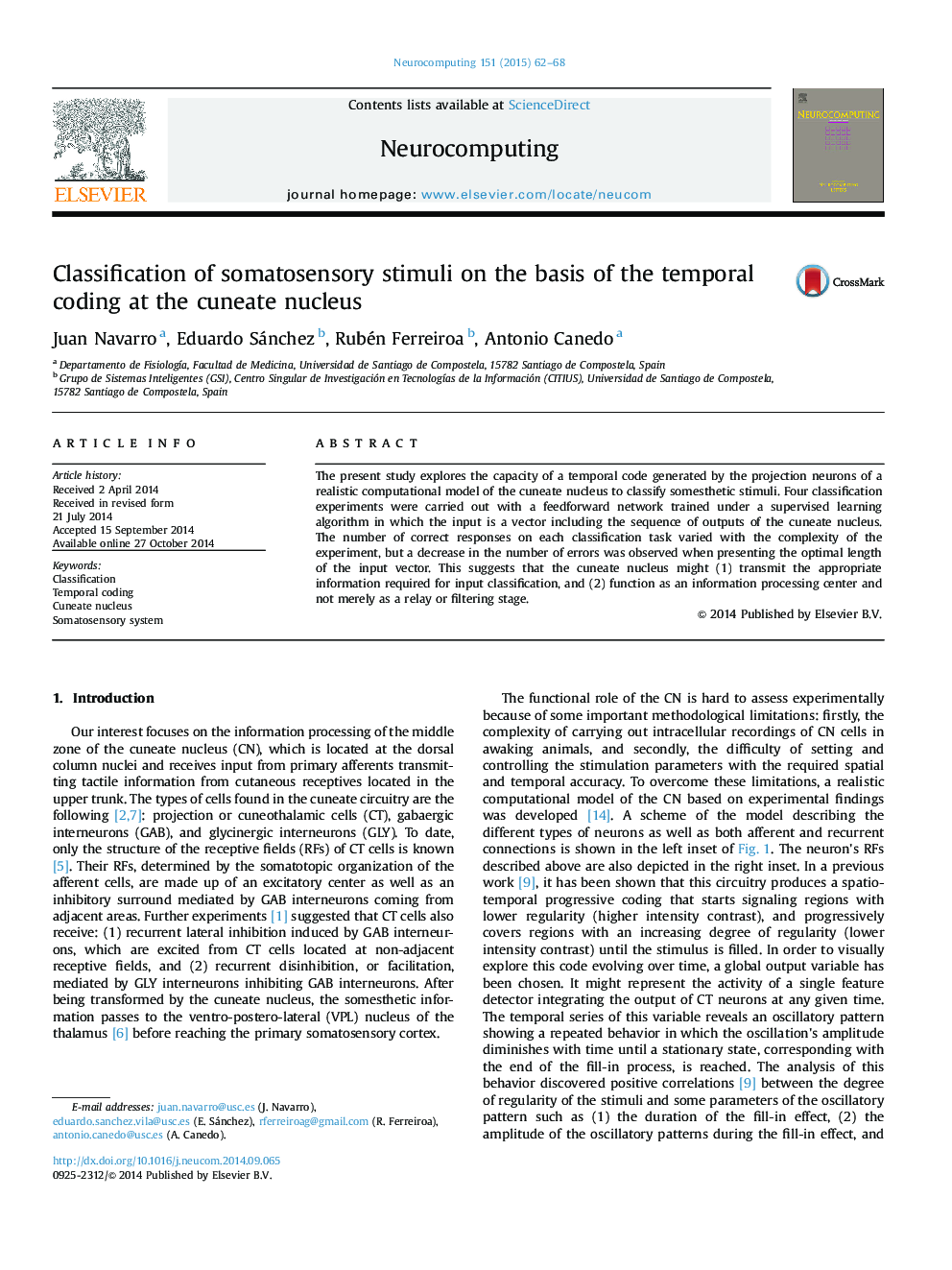| Article ID | Journal | Published Year | Pages | File Type |
|---|---|---|---|---|
| 409689 | Neurocomputing | 2015 | 7 Pages |
The present study explores the capacity of a temporal code generated by the projection neurons of a realistic computational model of the cuneate nucleus to classify somesthetic stimuli. Four classification experiments were carried out with a feedforward network trained under a supervised learning algorithm in which the input is a vector including the sequence of outputs of the cuneate nucleus. The number of correct responses on each classification task varied with the complexity of the experiment, but a decrease in the number of errors was observed when presenting the optimal length of the input vector. This suggests that the cuneate nucleus might (1) transmit the appropriate information required for input classification, and (2) function as an information processing center and not merely as a relay or filtering stage.
